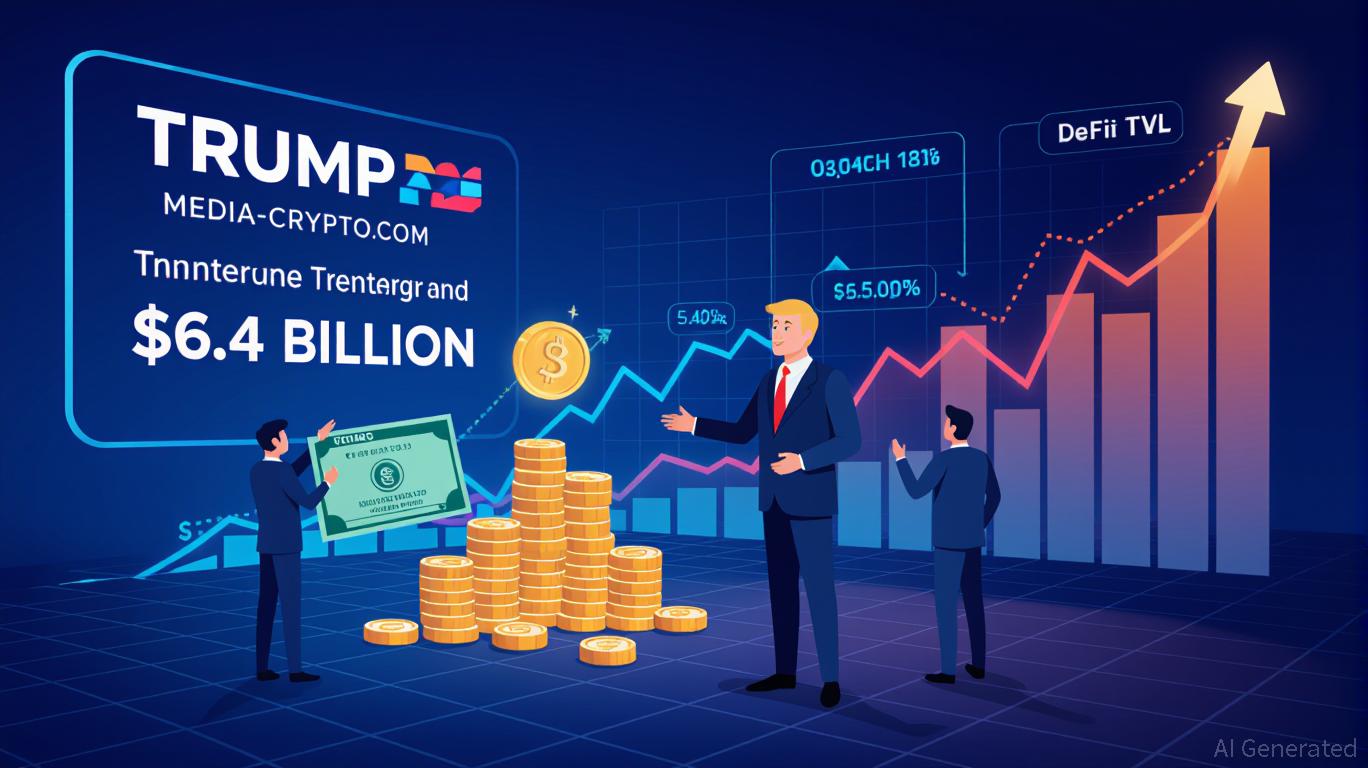Gold Price: Strategic Diversification in Decentralized Decision-Making Environments
- Decentralized governance and AI-driven frameworks in 2025 have reshaped systemic risk management, boosting demand for gold as a strategic hedge. - Industrial giants and emerging economies added 200+ metric tons of gold to reserves, leveraging its dual role in supply chains and geopolitical diversification. - Gold prices surged past $3,300/ounce as central banks and BRICS nations reclassify it as a critical asset amid dollar erosion and de-dollarization trends. - Investors are advised to allocate 10–15% t
In 2025, the intersection of decentralized corporate governance and asset allocation has created a paradigm shift in how organizations and investors approach systemic risk. As companies adopt AI-powered governance platforms and real-time decision-making frameworks, the demand for non-correlated assets like gold has surged. This evolution reflects a broader macroeconomic trend: the redefinition of gold's role from a speculative commodity to a strategic hedge in a world of fragmented governance and geopolitical uncertainty.
Decentralized Governance and the Rise of Gold as a Systemic Hedge
Decentralized corporate models, driven by technologies like blockchain and AI, have empowered local teams to act autonomously while maintaining alignment with overarching strategic goals. This agility has reshaped risk management priorities, with firms increasingly prioritizing diversification against macroeconomic and geopolitical shocks. Gold, long viewed as a store of value, has emerged as a critical component of this strategy.
For instance, industrial giants like Caterpillar and BASF have leveraged decentralized governance to reduce procurement lead times by 30% through blockchain-enabled supply chains. These firms now maintain strategic gold reserves to secure supply chains in high-tech sectors such as semiconductors and green energy, where gold's conductive properties are indispensable. This industrial demand, combined with its financial role, has created a dual-use dynamic for gold, driving both physical and financial market activity.
Central banks in emerging economies have mirrored this trend. Poland, China, and Türkiye added over 200 metric tons of gold to their reserves in 2025, hedging against the U.S. dollar's 10.8% decline in the first half of the year—the worst start since 1973. The dollar's erosion, coupled with the weaponization of financial systems (e.g., sanctions targeting BRICS nations), has reinforced gold's appeal as a politically neutral asset.
The Financial Markets' Response: Gold's Structural Appreciation
The financial markets have responded to these structural shifts with significant price appreciation. The SPDR Gold Shares (GLD) ETF, which tracks gold prices, surged past $3,300 per ounce in 2025, reflecting its inverse correlation with the U.S. dollar and its resilience amid rising inflation. Behavioral economics further explains this trend: prospect theory and loss aversion drive investors to allocate to gold during periods of uncertainty, particularly when decentralized governance models prioritize risk mitigation over short-term gains.
Investors are increasingly advised to allocate 10–15% of portfolios to gold to hedge against stagflation risks—a strategy gaining traction as macroeconomic volatility intensifies. This demand is not cyclical but structural, rooted in the decentralization of industrial and financial decision-making. For example, BRICS nations are exploring gold-backed financial instruments, while India considers pension fund allocations to gold ETFs, signaling a global reclassification of gold as a critical asset.
Strategic Opportunities for Investors
The convergence of decentralized governance and gold demand presents unique opportunities for investors. Monitoring central bank purchases, BRICS-led initiatives, and industrial demand in tech and energy sectors is essential for understanding gold's long-term fundamentals. Key indicators to track include:
- Central Bank Gold Reserves: Emerging markets' gold accumulation rates.
- Industrial Demand: Gold usage in semiconductors and green energy projects.
- Geopolitical Shifts: De-dollarization trends and BRICS financial innovations.
Investors should also consider the U.S. government's reclassification of gold as a critical mineral and its expansion of domestic refining capabilities. These policies signal a strategic push toward self-sufficiency, further solidifying gold's role in both industrial and financial portfolios.
Conclusion: A New Era of Diversification
The evolution of decentralized governance models has transformed gold from a traditional safe-haven asset into a cornerstone of modern risk management. As firms and nations adopt agile, technology-driven frameworks to navigate a volatile global landscape, gold's dual role as an industrial and financial asset will continue to expand. For investors, this represents a rare opportunity to hedge against systemic risks while capitalizing on a structural shift in asset allocation. In a world of decentralized decision-making, gold remains a timeless, non-correlated anchor.
Disclaimer: The content of this article solely reflects the author's opinion and does not represent the platform in any capacity. This article is not intended to serve as a reference for making investment decisions.
You may also like
CRO’s Sudden Surge Amid Bitcoin’s Rally: Altcoin Momentum and DeFi Recovery in a Bullish Crypto Cycle
- Cronos (CRO) surged 164% weekly amid Bitcoin's $111,000 rally, driven by Trump Media-Crypto.com's $6.4B treasury partnership. - The deal injected institutional liquidity into CRO, expanding its utility in Truth Social payments and boosting TVL by 46.16% in Q3 2025. - Cronos' POS v6 upgrades and $100M Ecosystem Fund position it as a hybrid DeFi-corporate asset, outperforming Bitcoin in percentage gains. - Bitcoin's 59.18% dominance in Q3 2025 highlights a "two-tier" market structure, with altcoins like CR

The High-Stakes Gamble of Celebrity-Backed Memecoins: Why Retail Investors Are Getting Burned
- Celebrity-backed memecoins exploit influencer hype and centralized tokenomics to manipulate prices, leaving retail investors with volatile, utility-less assets. - Insiders hoard 70-94% of supply in projects like YZY and $TRUMP, using liquidity pools and pre-launched allocations to extract millions before crashes. - U.S. regulatory ambiguity enables manipulation via wash trading and sniping, while Canadian authorities demand transparency in promotional arrangements. - Academic studies confirm 82.6% of hig

Horizon: Bridging DeFi and Financial Inclusion Through Consórcio Quotas
- Aave's Horizon project uses blockchain and Chainlink tools to democratize capital access in emerging markets via tokenized real-world assets (RWAs). - Chainlink's ACE and CCIP enable compliance automation and cross-chain interoperability, unlocking $25B in institutional liquidity through structured financing models. - The reimagined Consórcio Quotas model tokenizes cooperative loans with automated KYC/AML checks, expanding financial inclusion while meeting regulatory standards. - Strategic partnerships w

From AI Islands to an Internet of Agents, Here’s Why 2025 Feels Like a Turning Point
